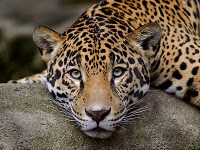Flora:
Vegetation in Gir can be looked at in four ways. The first is the Teak forest and nearly half of the protected area has this kind of a habitat. The main tree species that occupy this habitat are Khair, Sadad, Timru, Babul, Amla, Moledi, Dhavdo, Kadayo and Bahedo. The non-Teak forests, which comprise the remaining forest consists of tree species like the Khair, Dhavdo, Sadad, Timru, Amla, Moledi, Kadayo, Salai, Simal, Khakhro, Ber and Asundro. A distinct belt of vegetation is found along the main rivers and streams. Species like the Jambu, Karanj, Umro, Vad, Kalam, Charal, Sirus and Amli are found here. These trees are mostly broad leaved and evergreen, giving the area a cool shade and the moisture content. Finally, Prosopis and Casuarina have been planted in the coastal border as part of the aforestation plan.
Water reserves:
The seven major perennial rivers of the Gir region are Hiran, Shetrunji, Datardi, Shingoda, Machhundri, Ghodavari and Raval. The four reservoirs of the area are at four dams, one each on Hiran, Machhundri, Raval and Shingoda rivers, including the biggest reservoir in the area, the Kamleshwar Dam, dubbed 'the lifeline of Gir'.During peak summer, surface water for wild animals is available at about 300 water points. When drought hits the area following a poor rainfall, surface water is not available at a majority of these points, and water scarcity becomes a serious problem (mainly in the eastern part of the sanctuary). Ensuring the availability of water during peak summer is one of the major tasks of the Forest Department staff.
Asiatic Gir Lion:
Gir Sanctuary is the last and only home of the critically endangered Asiatic Lion. These lions are a smaller more compact version of their African version, and are best viewed at dawn or dusk when they are on the move. The major difference between the two is that the African Lion appears larger than the Indian Lion because of its large and luxuriant mane.
Leopards:
Leopard is considered to be one of the most beautiful and graceful animals in the jungle, also the most dangerous one. Popularly known as the Prince of Cats, this animal is the most adaptable from the family of predators, one the reason why it occupies a much larger spread of Gujarat forest cover, and in Gir National Park it has been found in all the varied habitats and vegetation types. The approximate population of 210 Leopards resides within the sanctuary area.
Reptiles:
Not leaving the water predators behind, Mash crocodiles are often seen along the Kamleshwar Dam Site. Another major attraction among the reptile population of Gir National Park are the numerous non-venomous Snakes such as the Indian Rock Python along with the four venomous varieties, which are Indian Cobra, Common Krait, Saw Scaled Viper, Russell's Viper.
Wildlife:
The foremost attraction in the park is the beasts that roam around freely, the most majestic being undoubtedly the lion. It is this majestic beast that attracts the maximum tourists to this park. Of course, you must understand that it would probably take a long time to view lions or lionesses with their cubs, since they don’t emerge too quickly out of their hiding. However, other creatures that inhabit the park and that are equally interesting to look out for are leopards, jungle cat, hyenas, jackals and mongoose.
Birds:
A sure bird-watcher’s paradise, the park has quite a variety of vultures, crested serpent eagle, the endangered bonelli's eagle, crested hawk-eagle and the great horned owl. Occasionally the Indian grey hornbill can also be spotted here.
Nalsarovar Lake and Bird Sanctuary:
This sanctuary comes under the Gir Forest and is home to a large number of birds. It is the largest wetland and bird sanctuary in India.
Crocodile Breeding Farm:
The Crocodile Breeding Farm near Sasan is an interesting place to see, where reptiles are hatched and reared before they are set free into the forest in their natural habitat.
Tulsi Shyam Temple:
A temple dedicated to Lord Krishna is present in the area belonging to the Nalsarovar Bird Sanctuary. Hot springs nearby are also a major attraction. The strong smell of sulphur here makes the area easily recognizable.



-saurastra.jpg)



%20-min.jpg)

















